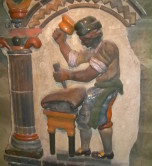My best teachers had more information than I did. My worst teachers had more information, too.
The difference between my best and the rest was a respect for insight. The best teachers focused on meaning and gave their students a paradoxical gift—the opportunity to struggle with understanding. While most teachers emphasized the importance of memorizing dates —1066, 1492, 1776, 1861, 1914, 1964— the best teachers regarded dates as no more critical than page numbers in a novel.
Information served as a starting point for our chaotic journey toward insight.
Many of us with leadership responsibility—teachers, supervisors, parents—don’t see themselves as leaders. We focus on management, control, and authority. In graduate school I endured a required Classroom Management course in which we were told never to use the word learn in a behavioral objective, which we called BO’s. It was as if learning needed to be removed from the classroom. I still can’t fathom why there was no required class in Learning Leadership.
We who are responsible for teaching have instant access to more data than has been available in all of human history—the Internet. So do our students. So it’s about time we reframed our role. We no longer need to manage what people learn or direct them to sources. We need to provide them with opportunities for developing insight, the elastic between information and ideas. To do this, we’ll have to rethink our roles and redefine our behavior.
Three ideas power this new way of framing our responsibility.
First: we can’t control what others learn. Each of us learns uniquely. In “The Night They Drove Old Dixie Down,” The Band sang, “take what you need and leave the rest.” Understanding is and always has been individual. We can influence what people memorize by rewarding them for parroting information. And information can be a powerful baseline for comprehension, but it’s not the same as understanding. We encourage others to gain insight when we serve as a resource rather than as a director.
Second: chaos creates learning. Many of us have been programmed to see planning as the panacea for ambiguity. What’s wrong with ambiguity? Ambiguity is not threatening, it’s necessary for deep insight. Any classroom structure that creates safety is useful; any that limits individual insight is not. That’s a delicate balance to achieve, and it’s why we’ll always need teachers to keep the chaos generative, so the noise doesn’t overshadow the light.
Third: always welcome what we don’t know. To see an expert in the mirror is dangerous. Our insight grows through relationships between what we already understand and what we don’t. Wide-eyed and pleasantly surprised provides the habitat for life-long learning. Not just for students, but for all of us.
People learn through leaps of insight which are available only when we let go of information as the goal of learning. We need to keep information as the baseline, not the end point.






